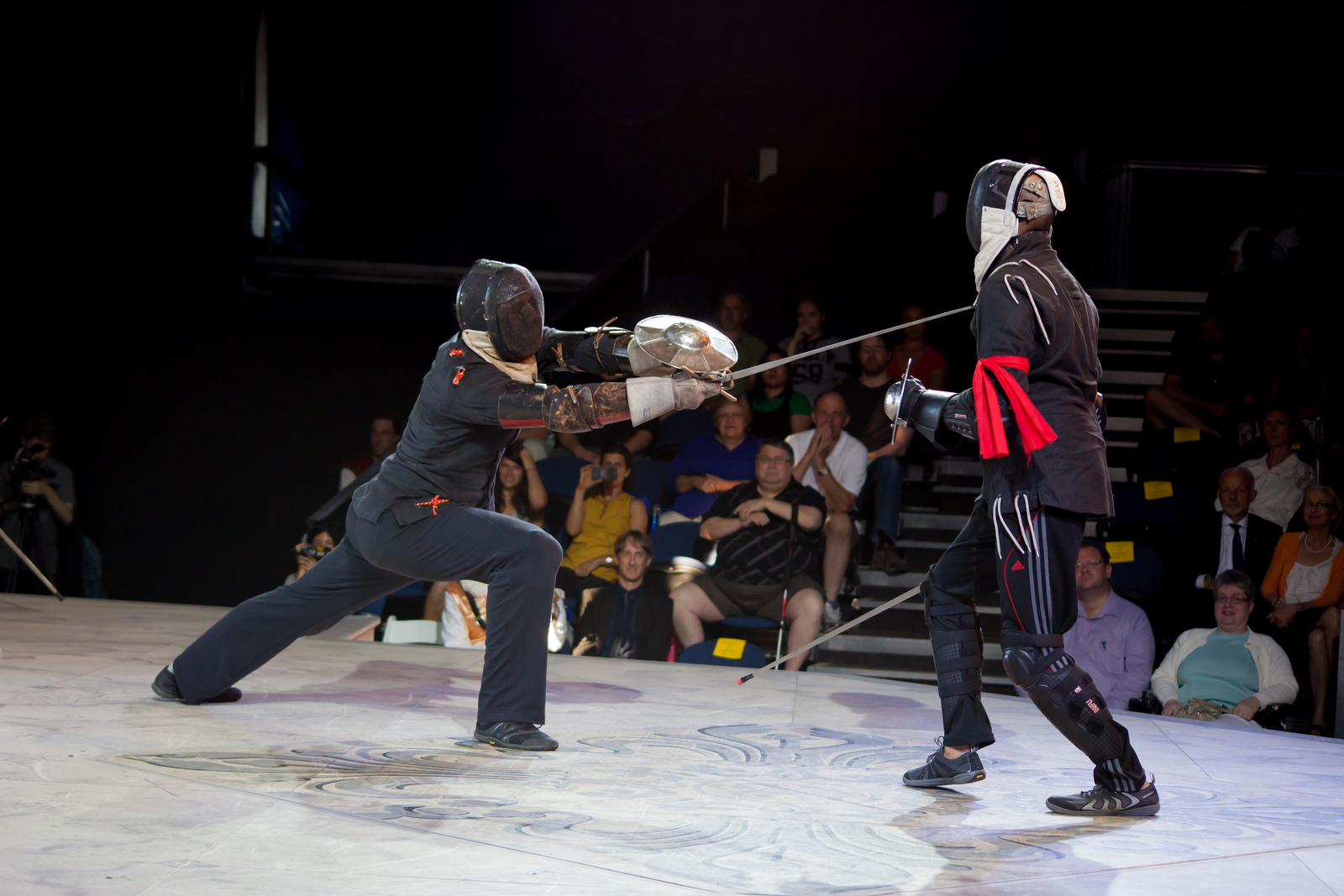Anna’s arms extended out into the cut, the point of her sword wavering her body ever so slightly withdrawn, the extension of her arms slightly slack. The motion was essentially correct but every part of it was made with doubt as if she were exacting over every detail and wondering if she was doing it right.
I have often found that my best off-the-cuff performance of a movement or action in dance or swordplay is when I have to do it for an audience. As a teacher I have often demonstrated movements that I have not practiced in a long time (there’s a lot of content in this art) and had those movements come out exactly as planned. Yet if I had been performing the action as a student it may have come out much more tentatively as I investigated and questioned its progression.
It can be challenging to observe and dissect a motion without making it more tentative. Yet we have to allow learning of a movement to go through two phases
1. Exploration
2. Practice
In the exploration phase we are investigating and exploring the movement. This does not mean dissecting it, it means performing repetitions of it accepting that things in that movement will be going wrong. We’re learning to do the action in a way that meets our objective in a way that is mechanically optimal. I have heard the phrase many times “Practice doesn’t make perfect, it makes permanent.” and then watched people freeze up in their exploration of an action because they’re so afraid of performing it wrong at all. I personally prefer “Discover the boundary of right by doing all of the wrong around it.” In this phase take away tentativeness of doubt and instead open up to curiosity.
In the practice phase you have the movement in an essentially correct space. You know the movement, received good coaching on it, and have it to a place where it is accomplishing its objectives. Now you are working to get in as many solid repetitions as possible to ingrain it into your motor program. Here is where you need to step out of the exploration brain and just do the movement like you mean it. Put intention in each action (whether fast or slow) and don’t try to adjust with observations mid movement. Make the movement, make 10 of the movement, and make any correction an intentional one between repetitions. So often what a movement needs to find its final 10% of proficiency is just to be trusted and performed with confidence, even if that starts as pretend confidence.
